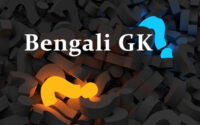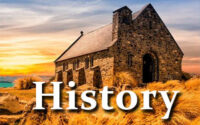Indian History GK
Indian History GK for Competitive Exam for all Posts. So, the candidates who are dreaming for prestigious Jobs can use this opportunity. Applicants can check the Ancient Indian History MCQ. Also, check Indian History Gk in Hindi Question Papers from the below sections.
Interested candidates can just click on the attachment and verify the Indian History MCQ Previously Asked Questions and Answers. You are also allowed to download Indian History Gk Questions Papers in Hindi.
Click on the link and get Modern India Quiz Old Question Papers along with Solutions. Hope, this page will be useful for your Indian History MCQ for Competitive Exam Preparation.
The Indian History General Knowledge Question Paper available. Many of the candidates had applied for the competitive examination. For such candidates, we have provided the Ancient Indian History MCQ Question Paper with Answer pdf to prepare better for the exam.
Furthermore, the contenders can also find and download the Modern India Quiz Question Paper as well as Indian History MCQ for Competitive Exam Question Paper from the link given below in the post. Hence, start to download the Indian History MCQ for Indian History GK from now itself, do not delay it.
Furthermore, in the following link, we have updated the complete Indian History Gk Questions along with the exam pattern. Start your preparations by solving the Modern India Quiz Question Papers so that you can do well on your exams.
Question And Answers on Indian History
1. Which of the following was not a feature of Indus Valley Civilization?
(A) Town planning
(B) Use of iron
(C) Use of bronze
(D) Drainage system
2. Who is called the father of Indian Archaeology?
(A) Sir John Marshall
(B) Dayaram Sahani
(C) S. R. Rao
(D) Sir Alexander Cunningham
3. Who was the first scholar to decipher the Asokan inscriptions?
(A) James Prinsep
(B) R. K. Mukheiji
(C) Sir Alexander Cunningham
(D) R. S. Sarma
4. Which of the following Buddhist Councils was presided over by Vasumitra?
(A) First Buddhist Council, Rajgir
(B) Second Buddhist Council, Vaisali
(C) Third Buddhist Council, Pataliputra
(D) Fourth Buddhist Council, Kundalvana
5. The birthplace of Gautama Buddha was at
(A) Kapflavastu
(B) Bodh Gaya
(C) Vaisali
(D) Vidisa
6. The Sangam literary works were compiled in
(A) North India
(B) North-East India
(C) South India
(D) Takshashila
7. Who assumed power after the death of Chandragupta Maurya?
(A) Bindusara
(B) Bimbisara
(C) Asoka
(D) Kharavela
8. Who among the following kings was known as ‘Devanam Piya Piyadasi’?
(A) Chandragupta Maurya
(B) Samudra Gupta
(C) Asoka
(D) Haxshavardhana
9. Charaka Samhita was a work on
(A) Medicine
(B) Religion
(C) Astrology
(D) Law
10. Who was the ‘court poet’ of Harsha?
(A) Banabhatta
(B) Vasumitra
(C) Harishcna
(D) Kalhana
11. Who among the following was an ally of Harshavardhana?
(A) Kumar Bhaskaravarman
(B) Sasanka
(C) Dhannapala
(D) Fa-Hien
12. Who was the twenty-third Tirthankar of Jainism?
(A) Parsvanath
(B) Rishabha
(C) Vardhamana Mahavira
(D) Siddhartha
13. The last Nanda King defeated by Chandragupta Maurya was
(A) Mahapadma Nanda
(B) Dhana Nanda
(C) Ugrasena
(D) Rudradaman
14. Who was Mihirkula?
(A) A Chinese pilgrim
(B) An Indo—Greek ruler
(C) A Saka ruler
(D) A Huna invader
15. The caves of Ajanta are famous for
(A) Sculpture
(B) Paintings
(C) Temples
(D) Terra cotra
16. Who has been described as the” ‘destroyer of the Sakas, the Yavanas and the Pallavas’?
(A) Simuka
(B) Skanda Gupta
(C) Satakamil
(D) Gautamiputra Satakami
17. Which Chola king assumed the title ‘Gangaikonda’ and built the new capital Gangaikonda cholapuram?
(A) Rfijarajfl
(B) Rajaraja ll
(C) Kulottunga II
(D) Rajendral
18. Dantidurga was the founder of which dynasty?
(A) Cholas
(B) Rashtrekutas
(C) Chalukyas
(D) Pallavas
19. The Arthasastm of Kaufilya is a
(A) biography of Kautilya
(B) book on the principles of government
(C) biography of Chandragupta Maurya
(D) book of poems
20. The Saka era began from
(A) 78 B.C.
(B) 100 A.D.
(C) 712 A.D.
(D) 78 A.D.
21. Kalhana’s Rajatarangini is a historical work on
(A) Malwa
(B) Kashmir
(C) Gujarat
(D) Orissa
22. The style of architecture that was prevalent Chola dynasty was
(A) Nagara Style
(B) Dravida Style
(C) Gopuram style
(D) Solanki style
23. Who was the founder of the Pala dynasty of Bengal?
(A) Dharampal
(B) Mahipal
(C) Gopala
(D) Devpal
24. Tamralipti was
(A) an island
(B) a temple
(C) an Indian port
(D) a river
25. The greatest Chalukya ruler who was contemporary of Harsha was
(A) Pulakesin II
(B) Govinda II
(C) Krishna II
(D) Kakka II
26. Who completed the construction of Qutb Minar?
(A) Qutb-ud-din Aibak
(B) Iltutmish
(C) Raziya Sultana
(D) Firoz Shah Tughluq
27. Timur’s invasion took place in the year
(A) 1398 AD
(B) 1598 AD
(C) 1739 AD
(D) 1761 AD
28. Who among the following introduced the market control policy during the Sultanate rule in India?
(A) Iltutmish
(B) Firoz Shah Tughluq
(C) Ala-ud-din Khilji
(D) Ibrahim bodi
29. Who was the author of Kitab-ul-Hind?
(A) Isami
(B) Ibn Batutah
(C) Al-Biruni
(D) Utbi
30. The commonly used silver coin of the Turko-Afghans was the
(A) Jital
(B) Dam
(C) Dinar
(D) Tanka
31. The iqta system means
(A) the grant or revenue from a territory
(B) crown lands
(C) State’s share of 1/5th of the spoils of war
(D) law of primogeniture
32. What was the official language of the Sultanate?
(A) Persian
(B) Urdu
(C) Arabic
(D) Hindi
33. The Muslim general who campaigned deep into South India going as far as Kanyakumari is
(A) Ala-ud-din Khilji
(B) Malik Kafur
(C) Muhammad ibn-Kasim
(D) Janna Khan
34. Dohas are
(A) the religious teachings of Sufis
(B) the Muslim devotees who emphasized personal devotion of man to god through love
(C) a group of merchants
(D) couplets which Kabir composed and by which he taught his followers
35. The word Sikh means
(A) Single
(B) Devotee
(C) Disciple
(D) Fighter
36. The name of the last Sikh Guru is
(A) Guru Arnardas
(B) Guru Teg Bahadur
(C) Guru Govind Singh
(D) Gum Har Govind
37. Ibn Batutah compiled his memoirs and named it
(A) Travel in India
(B) Mukujul Jabab
(C) Rehla
(D) Tughluqnamah
38. When did the Arabs invade Sindh?
(A) 110 AD
(B) 712 AD
(C) 714 AD
(D) 716 AD
39. Mihr-un-nisa is popularly known as
(A) Nur Jahan
(B) Mumtaz
(C) Hamida Banu
(D) Gulbadan Begam
40. Captain Hawkins and Sir Thomas Roe visited India during the reign of the Mughal emperor
(A) Akbar
(B) Jahangir
(C) Shah Jahan
(D) Aurangzeb
41. Tulsi Das was the author of
(A) Sursagar
(B) Ramcharit Manas
(C) Padmavat
(D) Ram Nauami
42. Who discontinued the policy of Jharokhn-Darshan?
(A) Akbar
(B) Jahangir
(C) Shah Jahan
(D) Aurangzeb
43. Which is the name of the Memoirs of Jahangir?
(A) Tuzuk-i-Jahangiri
(B) Iqbalnama-i-Jahangiri
(C) Tarikh-i-Jahangiri
(D) Masir-i-Jahangiri
44. The mother of Shivaji was
(A) Jija Bai
(B) Putali Bai
(C) Ramabai
(D) Meera Bai
45. The First Battle of Panipat (1526) was fought between
(A) Babur and Ibrahim Lodi
(B) Akbar and Hemu
(C) Akbar and Rana Pratap Singh
(D) Humayun and Sher Shah
46. The original name of Sher Shah was
(A) Farid
(B) Salim
(C) Karim
(D) Abdul
47. The distinguishing feature of the reign of Shah Jahan was
(A) economic prosperity
(B) the loss of Qandahar
(C) the Deccan conquest
(D) the development of architecture
48. Pietra Dura means
(A) decorating walls miniature paintings
(B) decorating walls with floral designs made of semiprecious stones
(C) construction of buildings with glazed tiles
(D) Indo-Muslim architecture
49. Nadir Shah, who invaded India in 1739, came from
(A) Persia
(B) Afghanistan
(C) Central Asia
(D) Iraq
50. The Third Battle of Panipat was fought between
(A) the Marathas and the Afghans
(B) the Mughals and the Marathas
(C) the Marathas and the British
(D) the British and the Afghans
51. Who wrote the couplet? ‘If there is a paradise on earth, it is this; it is this, none but this.’
(A) Amir Khusrau
(B) Abul Fazl
(C) Birbal
(D) Nizam-ud-din Aulia
52. The English East India Company acquired the Dewani of Bengal, Bihar and Orissa by
(A) the Treaty of Allahabad, 1765
(B) the Treaty of Sagauli, 1816
(C) the Treaty of Seringapatam, 1792
(D) the Treaty of Bassein, 1802
53. The Third Anglo-Mysore War took place between English East India Company and Tipu Sultan during the period of Governor-General
(A) Lord William Benfinck
(B) Lord Cornwallis
(C) Lord Wellesley
(D) Lord Hastings
54. Which of the following Mughal rulers died at Rangoon in 1862?
(A) Aurangzeb
(B) Jahandar Shah
(C) Bahadur Shah I
(D) Bahadur Shah II
55. The book Poverty and Un-British Rule in India was written by
(A) M. N. Roy
(B) Dadabhai Naoroji
(C) C. Gopalachari
(D) Gopal Krishna Gokhale
56. Which Act was created in British India by the Supreme Court?
(A) Regulating Act of 1773
(B) Pitt’s India Act of 1784
(C) Charter Act of 1813
(D) Charter Act of 1833
57. The most important French Settlement in Bengal was
(A) Hugli
(B) Chinsura
(C) Chandcrnagar
(D) Kasimbazar
58. Who abolished dual government in Bengal?
(A) Sir John Shore
(B) Warren Hastings
(C) Lord Hastings
(D) Lord Cornwallis
59. Non-Intervention Policy was followed by
(A) Lord Lytton
(B) Lord Auckland
(C) Lord Lawrence
(D) Sir John Shore
60. Who among the following has been popularly known as ‘Frontier Gandhi’?
(A) M. K. Gandhi
(B) Khan Abdul Gaffar Khan
(C) Indira Gandhi
(D) Firoz Gandhi
61. The play Neel Darpan deals with which of the following subjects?
(A) Poetry of 19th century
(B) The miserable condition of industrial labourers
(C) Plight of indigo plantation workers
(D) Plight of cotton cultivators
62. The leader of the Young Bengal Movement was
(A) Henry Vivian Derozio
(B) Dwarakanath Tagore
(C) William Jones
(D) Raja Rammohan Roy
63. Where did Swami Vivekananda attend the World Parliament of Religions?
(A) Chicago
(B) New York
(C) Washington
(D) Boston
64. The first Indian National Congress consisted of
(A) 90 delegates
(B) 89 delegates
(C) 72 delegates
(D) 76 delegates
65. ‘Swaraj is my birth right and I shall have it.’ Who said this?
(A) B. G. Tilak
(B) Annie Besant
(C) Mahatma Gandhi
(D) Subhash Chandra Bose
66. The Widow Remarriage Act was passed in the year
(A) 1856
(B) 1756
(C) 1865
(D) 1872
67. The first martyr of Scpoy Mufiny (1857) was
(A) Mangal Pandey
(B) Nana Sahib
(C) Bhagat Singh
(D) Maniram Dewan
68. Who started the Aligarh Movement?
(A) Aga Khan
(B) Salimulla Khan
(C) Sir Syed Ahmad Khan
(D) Khan Abdul Gaffar Khan
69. The period from 1813 to 1858 is known as
(A) the policy of subordinate isolation
(B) the policy of ring fence
(C) the policy of subordinate union
(D) the policy of equal federation
70. Who repealed the Vemacular Press Act?
(A) Lord Ripon
(B) Lord Lytton
(C) Lord Curzon
(D) Lord Canning
71. Who was the first Indian to join the Civil Service in 1863?
(A) Surendra Nath Banezjee
(B) Romesh Chandra Dutta
(C) Satyendranath Tagore
(D) Biharilal Gupta
72. In which Session, Indian National Congress was divided into moderates and extremists?
(A) Surat Session, 1907
(B) Lucknow Session, 1916
(C) Nagpur Session, 1920
(D) Lahore Session, 1929
73. Which of the following granted ‘separate electorate’ to Indian Muslims?
(A) Morley-Minto Reforms, 1909
(B) Charter Act of 1833
(C) Muslim League in 1906
(D) Government of India Act, 1935
74. When was the first jute mill established?
(A) 1856
(B) 1855
(C) 1854
(D) 1888
75. Who among the following struggled for upliftment of Harijans?
(A) Gopal Krishna Gokhale
(B) Mahatma Gandhi
(C) Bal Gangadhar Tilak
(D) Tyagaraj
76. Who was the first female Chairman of Indian National Congress?
(A) Aruna Asaf Ali
(B) Sarojini Naidu
(C) Annie Besant
(D) Raj Kumari Amrit Kaur
77. J. K. Bethune is associated with
(A) theosophical society
(B) women’s education
(C) spread of English education
(D) widow remarriage
78. Who came to be known as the ‘Grand Old Man of India?
(A) Justice Ranade
(B) Mahatma Gandhi
(C) Rabindranath Tagore
(D) Dadabhai Naoroji
79. Gandhiji was associated with the peasant movement of
(A) Bardoli
(B) Champamn
(C) Bengal
(D) Chauzi Chauxa
80. Who was the President of the Swaraj Party?
(A) C. R. Das
(B) Motilal Nehru
(C) Vallabhbhai Patel
(D) Madan Mohan Malviya
81. Quit India Resolution was adopted on
(A) 8th August, 1942
(B) 9th August, 1942
(C) 24th October, 1945
(D) 15th August, 1947
82. Who said, ‘Give me blood, I will give you freedom.?
(A) Jawaharlal Nehru
(B) Mahatma Gandhi
(C) B. G. Tilak
(D) Subhash Chandra Bose
83. Simon Commission visited India in the year
(A) 1926
(B) 1927
(C) 1929
(D) 1930
84. The ‘lnquilab Zindabad’ slogan was given by
(A) Chandra Sekhar Azad
(B) Subhash Chandra Bose
(C) Bhasat Singh
(D) Iqbal
85. Who wrote Hind Swaraj?
(A) Bal Gangadhar Tilak
(B) Vinoba Bhave
(C) Chandra Sekhar Azad
(D) M. K. Gandhi



